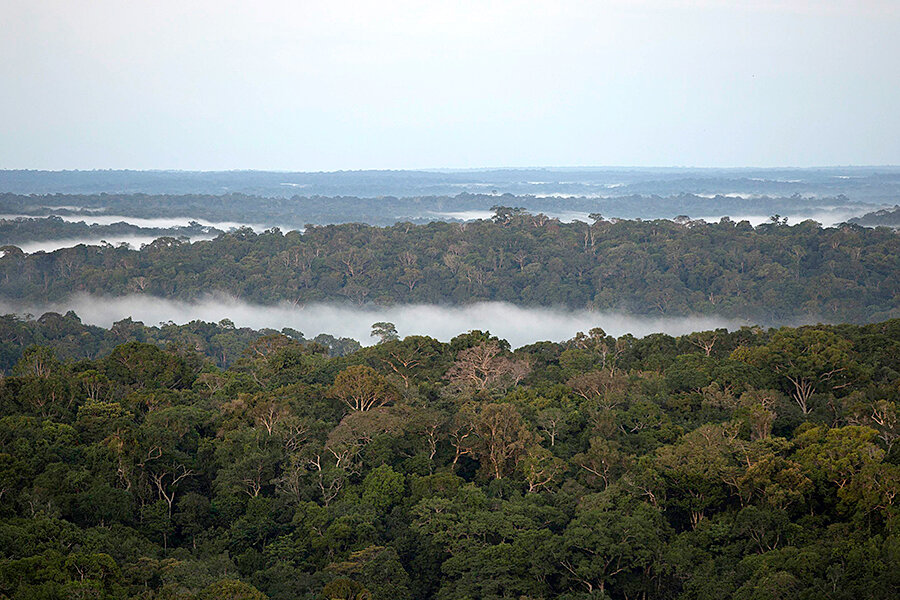Could sustainable logging in the Amazon help slow global warming?
Loading...
Trees are falling at an unsustainable rate across the globe, with devastating effects on our climate. But a shift in forestry procedures could hold promise for Amazonian logging.
Reduced-impact logging techniques could mean a forest recovers its carbon stocks in seven to 21 years, say researchers.
This rate holds hope, as swatches of forest subjected to commercial logging can take as long as 100 years to recover, according to a study published Monday in Current Biology.
In this research, recovery refers to the amount of biomass, specifically focusing on carbon stocks, held in the forests.
“Over the last decade we’ve been focusing on primary forests. Logged forests or managed forests have received little attention,” says study author Ervan Rutishauser of CarboForExpert in Switzerland and CIRAD in France. Primary forests have been the focus of conservation efforts, as the untouched woods hold deep stores of carbon.
But logged forests are not useless. “Those forests can play a role and can help with carbon sequestration,” says Dr. Rutishauser. “They should be preserved as well.”
Some previously believed that logging degrades a forest beyond recovery. But with some attention, logging doesn’t have to mean devastating the carbon stores in these parts of the Amazon, says Rutishauser.
Reduced-impact logging techniques can help loggers, or forest managers, chop a sustainable amount of wood. This includes careful consideration when making logging roads or trails, and managing the amount of trees crushed and killed by falling timber.
It's the carbon trapped in the roots, trunks, branches, and leaves of trees that makes deforestation so problematic. As trees grow, they feed off carbon dioxide, trapping it in their wood. But when trees die, most of that carbon dioxide is released back into the atmosphere.
Climate scientists estimate that about 10 percent of the annual global carbon increase results from deforestation.
At least 40 tons of carbon are held in each acre of the Amazon rain forest, according to estimates by the Union of Concerned Scientists. That dense forest spans about 1.4 billion acres, making up about half of the world's tropical forests, according to the World Wildlife Fund.
The newly discovered rate of recovery for sustainably logged forests holds hope for slowing net deforestation.
Rutishauser sees his work as a toolkit for forest management. “We’re providing a way to assess the time needed for [a section of forest] to recover its initial biomass or carbon stocks,” he says.
A logger can determine how much carbon sat in the timber on a section of land before it was logged. Then, “you can compute the time that your forest will need to recover that amount of biomass that has been extracted or harvested.”
This information can help forest managers determine how frequently a forest can be logged without dramatically depleting its carbon stocks.








